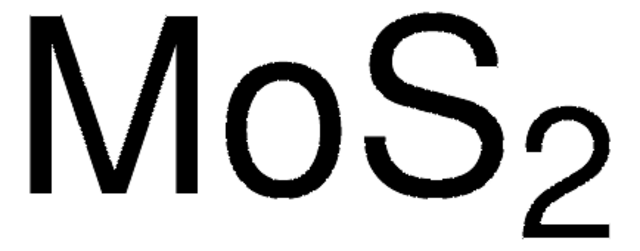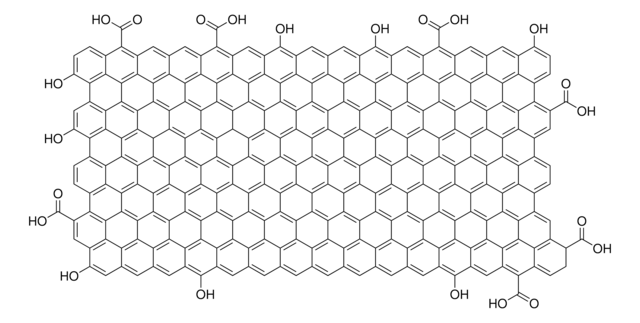901187
Molybdenum disulfide ink for inkjet printing
Synonym(s):
Molybdenum disulfide dispersion, with ethyl cellulose in cyclohexanone and terpineol
About This Item
Recommended Products
description
Resistivity: 10-100 kΩcm (thermally annealed 400 °C for 3 hours in Ar/H2 environment, film thickness >150 nm)
Quality Level
form
dispersion
composition
Solid content, 3.0-3.85%
greener alternative product characteristics
Design for Energy Efficiency
Learn more about the Principles of Green Chemistry.
color
green
particle size
≤0.4 μm
surface tension
30-35 dyn/cm
viscosity
4-11 mPa.s(25 °C) (shear viscoisty at 1000 s-1, 25 °C)
bp
213-218 °C (Terpineol)
density
0.9-1.1 g/mL at 25 °C
greener alternative category
SMILES string
[Mo]=S=S
Related Categories
General description
Other Notes
Legal Information
signalword
Danger
Hazard Classifications
Acute Tox. 4 Dermal - Acute Tox. 4 Inhalation - Acute Tox. 4 Oral - Eye Dam. 1 - Flam. Liq. 3 - Skin Irrit. 2 - STOT SE 3
target_organs
Respiratory system
Storage Class
3 - Flammable liquids
wgk_germany
WGK 2
flash_point_f
114.8 °F - closed cup
flash_point_c
46 °C - closed cup
Certificates of Analysis (COA)
Search for Certificates of Analysis (COA) by entering the products Lot/Batch Number. Lot and Batch Numbers can be found on a product’s label following the words ‘Lot’ or ‘Batch’.
Already Own This Product?
Find documentation for the products that you have recently purchased in the Document Library.
Customers Also Viewed
Articles
Professor Ebrahimi and Professor Robinson (Pennsylvania State University, USA) summarize recent advances in the synthesis of these 2D materials, resulting material properties, and related applications in biosensing of neurotransmitters, metabolites, proteins, nucleic acids, bacterial cells, and heavy metals.
Professor Gogotsi and Dr. Shuck introduce MXenes: a promising family of two-dimensional materials with a unique combination of high conductivity, hydrophilicity, and extensive tunability.
Our team of scientists has experience in all areas of research including Life Science, Material Science, Chemical Synthesis, Chromatography, Analytical and many others.
Contact Technical Service






